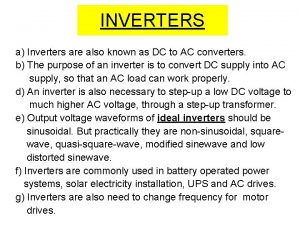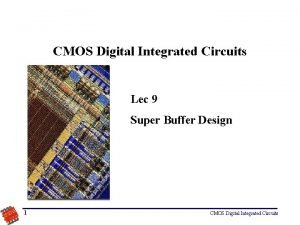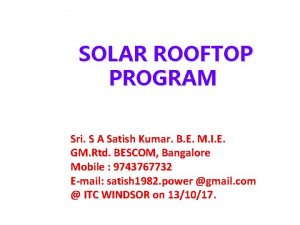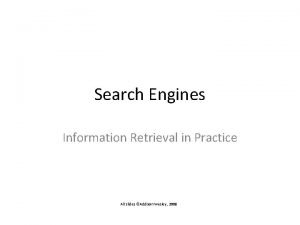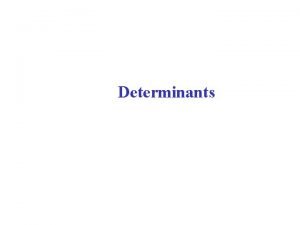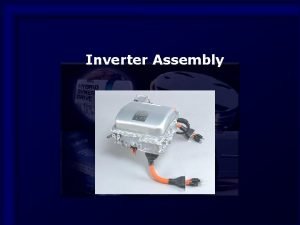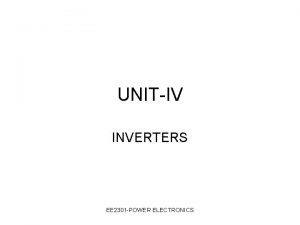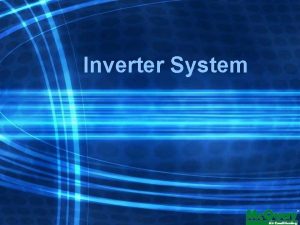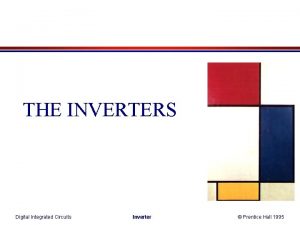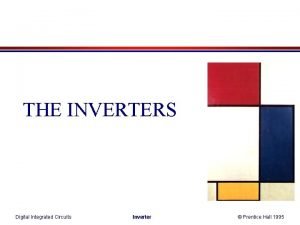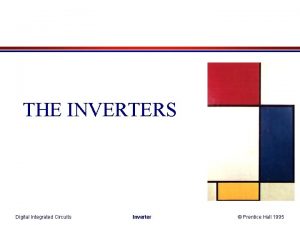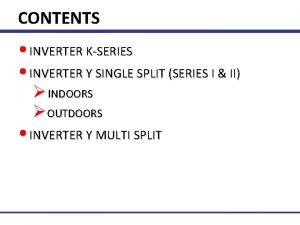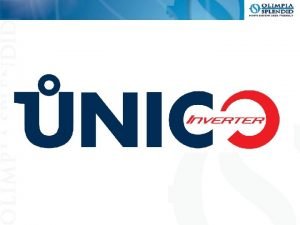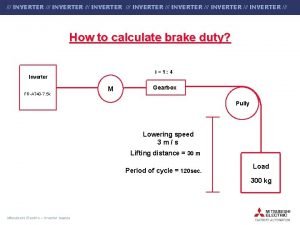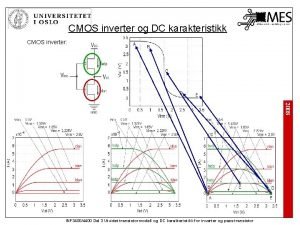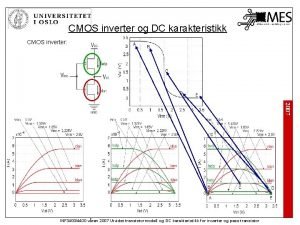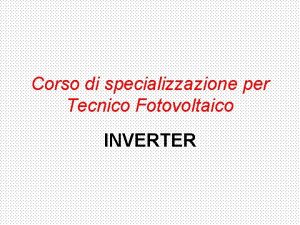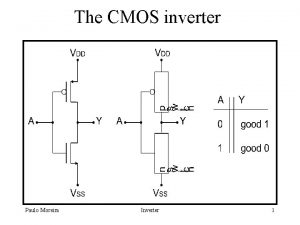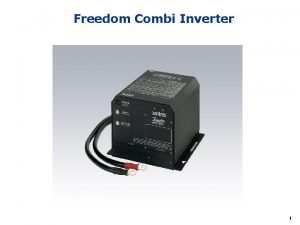Inverter Technology Inverters Invert Direct Current DC to



















- Slides: 19

Inverter Technology

Inverters: • Invert Direct Current (DC) to Alternating Current (AC) • Step up voltage to useable amounts (120, 240) 12 Volts DC battery 120 Volts AC

INVERTER DIRECT CURRENT ALTERNATING CURRENT

Inverter Basics • Power rating – Amount of power (watts) an inverter can provide to the loads. • Continuous Power Rating: Amount of power (watts) an inverter can continually provide to the loads • Surge Power Rating: Amount of power (watts) an inverter can provide to loads for SHORT periods of time. • Input Voltage – Input voltage the inverter is designed to accept. • Battery based inverters accept nominal voltages of 12, 24, and 48 volts DC

Inverter Basics • Input Voltage Continued – Grid-Tied inverters often accept 200 – 600 VDC • Most wind electric direct grid-tied inverters are specified by the wind turbine manufacturer. • Idle Power Consumption – Amount of power the inverter uses when not in OPERATION • Inverter Options – Low Voltage Disconnect: Inverter shuts off at low input voltage. – Generator input: inverter has internal battery charger or ability to run AC loads directly from motorized generators for low wind/solar input.

Inverter Technology NOT ALL INVERTERS ARE CREATED EQUAL Inverter Types: • Battery (off-grid) inverters • Grid-Tie with battery backup • Batteryless /direct grid-tied

Inverter AC Outputs NOT ALL INVERTERS ARE CREATED EQUAL • Square Wave • Modified Square Wave • Stepped Sine Wave http: //www. dansdata. com/images/diyups/waveforms 600. jpg • Pure Sine Wave

Square Wave Inverters • Low cost, Low Performance • Alternates b/w 120 volts + and 120 volts – – (Or do they? ) • Subjects electronics to voltage fluctuations based on battery voltages Home Power 134

Modified Square Wave Inverters • Much like the square wave tech. but with an added OFF function between + and – pulses. • Still low performance but better than Square wave. • Most common low cost battery based inverters • Not suitable for grid-tie applications • Often marketed as “Modified Sine Wave” inverters Home Power 134

Stepped Sine Wave Inverters � Improvement over the modified square wave with MORE “steps” � Efficiencies up to >90% � Often NOT grid-tied but suitable for offgrid battery based applications. Higher in price with higher performance. � exeltech Home Power 134

PURE/TRUE Sine Wave Inverters � A TRUE sine wave that matches GRID power (Sometimes BETTER) � Efficiencies greater than 95% � Off-Grid and Grid-Tied applications � Higher cost but BEST performances � Meets UL 1741 (Distributed Energy Resources) Certification � Digital and microprocessor controlled Home Power 134

Battery Based Off-Grid Inverters INVERTER • Make usable AC power from input DC battery voltage where grid connection is not an option or desired.

Battery Based Off-Grid Inverters Requirements: • Inverter input voltages – 12, 24, or 48 volt nominal voltages • Inverter output: – Total output for stand-alone systems must be sized to supply the load of the largest single piece of utilization equipment (NEC 694. 18) – Inverters should be sized to meet the total load requirements of any possible surges. • Utility interactive equipment NOT needed.

Off-Grid Battery Based Inverters Outback FX & VFX Magnum MS Sunny Island

Grid-Tie with Battery Backup

Grid-Tie with Battery Backup • Requirements: – Input Voltage: Nominal battery voltage (12, 24, 48) – Grid-interactive: Only inverters listed and identified as interactive shall be permitted in interactive systems (NEC 694. 60) – Inverter Output: Total output for grid-tie battery backup systems must be sized to supply the load of the largest single piece of utilization equipment (NEC 694. 18) (694. 60) (UL 1741) • 120 / 240 VAC @ 60 Hz

Grid-Tie with Battery Backup Out. Back G-Series The Sunny Island 5048 -US Xantrex XW

Batteryless Grid–Tied Inverters

Batteryless Grid–Tied Inverters • Requirements: – Input voltage: Must accept voltage range of turbine. – Inverter Output: Must be able to output total wind turbine rated output. • 120 / 240 VAC @ 60 Hz – Grid Interactive: (NEC 694. 60) (UL 1741) (Distributed Energy Resources)
 Inverters are also known as
Inverters are also known as In cmos inverters super buffers have
In cmos inverters super buffers have Srtpv status
Srtpv status Audacity invert
Audacity invert Banner in journalism
Banner in journalism Invert the subject and verb with place expressions
Invert the subject and verb with place expressions Pipe invert
Pipe invert Invert a binary tree
Invert a binary tree Inverse of a matrix formula
Inverse of a matrix formula Y connected generator
Y connected generator Phase to phase voltage
Phase to phase voltage Drift current and diffusion current in semiconductor
Drift current and diffusion current in semiconductor Ac theory 3 lesson 4
Ac theory 3 lesson 4 Drift current and diffusion current
Drift current and diffusion current Intrinsic semiconductor
Intrinsic semiconductor The value of vgs that makes id approximately zero is
The value of vgs that makes id approximately zero is In a y-connected source feeding a ∆-connected load,
In a y-connected source feeding a ∆-connected load, Slideplayer
Slideplayer Drift current density unit
Drift current density unit Why must the electrode holder be correctly sized?
Why must the electrode holder be correctly sized?
